White Noise Benefits: Sleep and Focus Explained

Written by
Stella Nilsson
Reviewed by
Prof. William Dalton, Ph.D.The advantages of using white noise is that it can help to mask disruptions that prevent you from sleeping well or concentrating.
You can turn the volume of sound on your device to a maximum of 45-65 decibels: this is considered safe and will add a masking effect, without the risk of hearing damage.
Some options may also include pink noise for deep sleep, brown for concentrating, or green noise for relaxation.
Good sound machines allow you to select the volume with precision, and deliver sound that is more consistent than traditional sound masking.
Sit your device 3-6 feet away from where you sleep or work so that it will be most effective and for safety reasons.
Using white noise in combination with sleep hygiene may result in 20-40% better concentration and sleep.
Article Navigation
You may wonder about the advantages of white noise. It begins with broadband noise. This sound contains all audible frequencies equally. You identify a constant humming sound. It obscures the disturbances around you. Numerous sleep apps currently offer it. It is also incorporated in wellness instruments. You can be one of the millions who get more sleep. They also report better focus each day.
We discuss two important benefits: sleep enhancement and focus improvement . It shields one from nighttime disturbances. It also helps one to keep the focus on any difficult tasks. We do not want to imply medical solutions. It is only educational! You now have it! You get a wealth of good knowledge. Use these things now and enjoy immediate benefits in sleep and work!
White Noise vs Other Sounds
White noise differs from other sounds because it has an even frequency distribution. All pitches reach your ears with the same strength. This forms a stable sound blanket. Natural noises, such as rain or birds, are produced erratically. Music delights your mind with tunes and words. Silence exposes you to every creak and thump.
Let's compare the sounds of nature with the sound of white noise. Nature recordings have random patterns. They may distract you when you're trying to concentrate. White noise, on the other hand, is a steady, even sound. It won't surprise your ears. Music demands thought. Your brain must follow the rhythms and words of music. White noise is neutral. You don't need mental energy to listen to it.
Quiet is a problem because it magnifies little inconveniences. A car door slamming far away is as severe as thunder. White sound fills the acoustic gaps. It makes the startling noise less sudden. Preferably, one should have a broadband machine giving a spectrum of sound from 20 to 20,000 cycles. It effectively masks both high- and low-frequency disturbances. The place remains uniformly quiet.
Choosing a White Noise Machine
For consistent sound quality, dedicated machines are far superior to smartphone apps. The apps vary in quality, depending on the speakers and devices. They also compress the audio, creating distortion. Machines give you reliable broadband coverage. Travelers appreciate the battery life of portable units. Units lasting from 20 to 40 hours on one charge. Apps consume a significant amount of power, draining the phone's battery and potentially leaving you without sound.
Volume control is vital to safety. Machines allow exact control of decibels. You can set volumes from 45 to 65 decibels at exactly the levels you desire. Most smartphone apps do not allow that fine control. There may be sudden spikes. Verify sound consistency across different sources. Some frequencies will sound louder with the same volume controls. Remember to protect an infant's ears by limiting the volume to a maximum of 50 decibels.
Examine mechanical versus digital generators. Mechanical generators produce a natural, fan-like white noise. Digital units employ chips to generate synthesized sound. High-quality machines do not produce looping artifacts, but make sure that the Maturation of a sound without perceptible repetition is seamless. Low-priced units develop annoying gaps. Do not listen for distortion of medium levels.
Check out those travel-friendly features. Battery-friendly units are chargeable via USB-C, so you're not wasting batteries. The international voltages handled here make you free from adapters. Edges are rubberized to protect against potential impact from luggage. Weighing less than a pound and being small makes them fit in any place. Solar-friendly, they can be charged outdoors. Details like this make travel more restful.
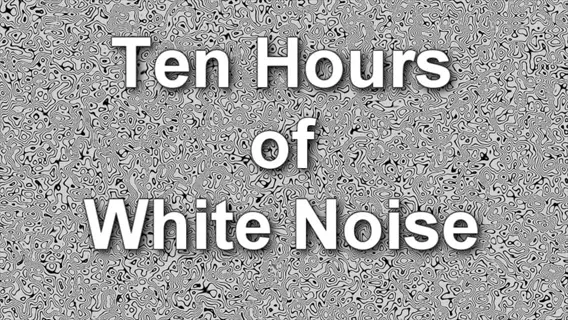
Sound Variety Options
- Fact: Dedicated machines typically offer 6-20 sound options including white, pink, brown, and nature sounds
- Basic models may only provide white noise while premium devices include customizable sound profiles
- Smartphone apps often have extensive libraries but may lack consistent audio quality across different devices
- Nature sounds like ocean waves or rainfall require high-quality speakers to avoid artificial looping effects
- Consider whether you need baby-specific sounds or options optimized for focus versus sleep
- Machines with sound mixing capabilities allow personalized combinations of different noise types

Volume Control Range
- Fact: Safe volume range should extend from 45dB (whisper) to 65dB (background conversation)
- Look for machines with precise incremental control rather than limited high/medium/low settings
- Nighttime-friendly models include automatic volume adjustment that responds to environmental noise changes
- Machines designed for nurseries often have maximum volume limiters at 50dB for infant safety
- Test volume consistency across different sound types since some frequencies seem louder at same dB level
- Portable devices should maintain consistent volume when switching between AC power and battery operation
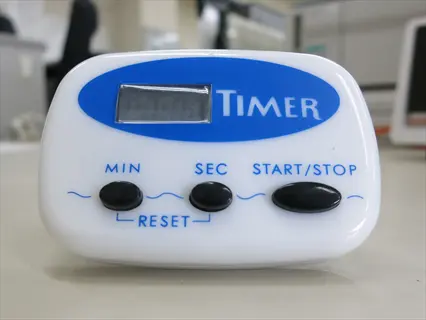
Timer Functionality
- Fact: Advanced timers offer 15-minute to 12-hour durations with automatic shutoff after sleep onset
- Basic models typically provide 30/60/90-minute presets while premium devices allow custom intervals
- Consider machines with smart detection that extends playtime if movement or noise is detected during sleep
- App-controlled devices often include sleep tracking integration that adjusts runtime based on sleep cycles
- For all-night use, ensure continuous play mode doesn't produce noticeable loops or audio artifacts
- Machines with gradual volume reduction features help avoid abrupt silence that might cause awakening
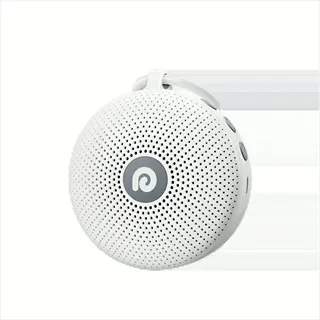
Portability Factors
- Fact: Travel-friendly models weigh under 1 pound (450g) with dimensions smaller than 6x6 inches (15x15cm)
- Battery life ranges from 8 hours in basic models to 40+ hours in energy-efficient premium devices
- Durable construction with rubberized edges protects against drops during luggage transport
- USB-C rechargeable options eliminate need for disposable batteries during extended trips
- Compact designs should include protective cases or pouches to prevent damage to control dials
- International voltage compatibility ensures safe operation worldwide without power adapters
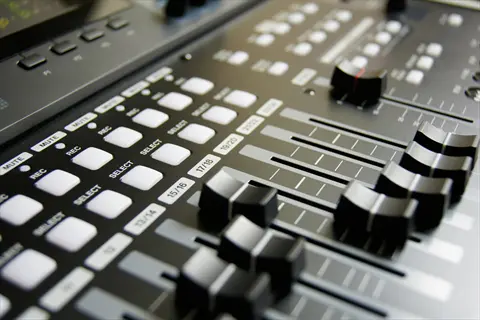
Sound Quality
- Fact: Mechanical generators create authentic fan-like white noise while digital chips produce synthesized audio
- High-fidelity speakers prevent distortion at medium volumes unlike cheaper tinny speakers
- Look for machines with wide frequency response between 20Hz-20kHz for authentic broadband coverage
- Digital models should have seamless looping without audible gaps between sound file repetitions
- Premium devices include noise-canceling processing that actively counteracts environmental disruptions
- Test for consistent audio quality across volume levels since some compress at higher volumes
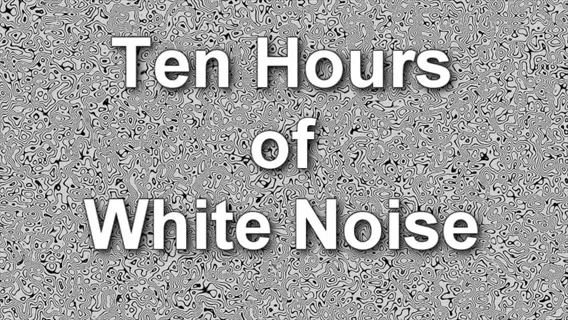
Additional Features
- Fact: Multi-functional devices may include night lights, Bluetooth speakers, or air quality sensors
- Night light options should offer adjustable color temperatures from warm amber to cool white
- Built-in alarms with gradual sunrise simulation provide gentler awakening than abrupt sounds
- Voice control compatibility allows hands-free operation through Alexa or Google Assistant
- Machines with headphone jacks enable private listening without disturbing partners
- Advanced models include baby monitors or environmental sensors that trigger sound adjustments

Power Options
- Fact: AC-powered units ensure uninterrupted operation while battery models offer outage protection
- Energy-efficient designs consume less than 5 watts during continuous nighttime operation
- Rechargeable lithium-ion batteries typically last 3-5 years before needing replacement
- Solar charging capabilities provide eco-friendly operation during outdoor activities
- Automatic battery/power switching prevents disruption during electricity failures
- Look for certified safety standards like UL listing to prevent overheating risks
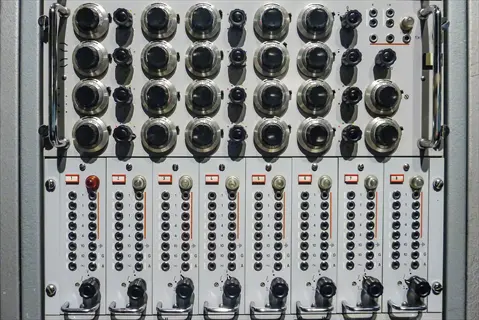
User Interface
- Fact: Intuitive controls should be operable without looking in complete darkness
- Tactile buttons with distinct shapes help navigate functions without visual assistance
- Backlit displays should have adjustable brightness or automatic shutoff after configuration
- Simple interfaces with minimal buttons prevent accidental setting changes during sleep
- App-controlled devices require clear menus with one-touch favorite sound presets
- Physical dials provide immediate volume adjustment compared to digital touch controls
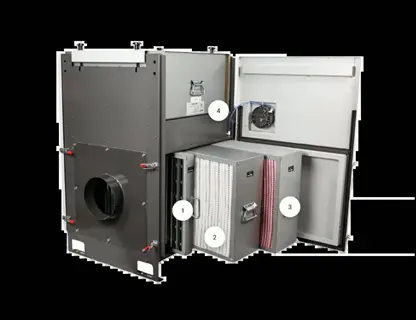
Durability Construction
- Fact: High-quality ABS plastic cases withstand drops from 3 feet (1 meter) onto hard surfaces
- Reinforced speaker grilles prevent damage from accidental poking or dust accumulation
- Water-resistant designs protect against spills and high-humidity bathroom environments
- Rubberized non-slip bases keep machines stable on nightstands during active sleep
- Childproof battery compartments prevent accidental access to small components
- Certified materials ensure no off-gassing of harmful chemicals in bedroom environments
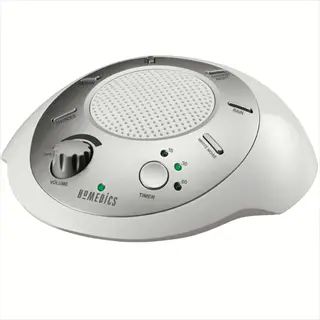
Price Considerations
- Fact: Entry-level machines cost $20-$40 while premium models reach $100-$150 with advanced features
- Mid-range $40-$80 devices typically offer best balance between features and sound quality
- Consider long-term value: mechanical generators often outlast digital counterparts
- App subscriptions may add $10-$30 yearly costs to supposedly free applications
- Energy consumption differences can add $2-$5 annually to electricity bills
- Warranty coverage varies from 90 days to lifetime protection on premium brands
Setting the Right Volume
Don't go over 70dB, your absolute threshold of safety. This is about the sound of traffic in a busy city or the sound of a shower. If you are exposed to it for a long time, you risk hearing damage. You can measure the actual dB using free apps on your smartphone. Put machines within 3-5 feet of your bed. This distance will lower the intensity of the noise and protect your ears.
Infants require special protection with sound levels of maximum 50 dB near their cribs. That is quieter than normal conversation. Place sound machines at least six feet from a sleeping child. Check the volume at the level of the child's ear during nap times. Automatic shut-off features enhance nighttime safety. Avoid reflective surfaces that may amplify sound.
Comprehend presets of decibels in practical terms. A library atmosphere will be 30dB, a light rain shower 50dB, and background chit chat in a restaurant 60dB. First, consider the ambient noise, then adjust the devices to 5dB greater. Office workers should match their ambient noise + 5dB. Travellers should bear in mind that home settings must be at least 10dB above.
Accurately determine placement distances. Each foot of distance reduces the volume to approximately 6dB. Doubling the distance results in a 6 dB reduction in power. Place the machines between you and the sources of all noise in hotels. Corners produce extra bass frequencies. Try all of the positions for the best coverage. Your ears will be grateful.
General Sleep Safety
- Critical Limit: Never exceed 70dB - equivalent to shower noise or city traffic
- Ideal range: 45-65dB matches background conversation level
- Prolonged exposure above 60dB may cause hearing fatigue over time
- Use free smartphone apps like NIOSH Sound Level Meter for verification
- Place machine 3-5 feet (0.9-1.5 meters) from bed for optimal dispersion
Infant & Children Settings
- Safety Protocol: Maximum 50dB near cribs - quieter than normal speech
- Position machines at least 6 feet (1.8 meters) from sleeping area
- Test volume at child's ear level while they're in sleeping position
- Machines with automatic shutoff preferred for overnight use
- Avoid placing near walls that reflect and amplify sound waves
Focus & Productivity
- Optimal Range: 55-65dB balances masking without distraction
- Office environments: Match ambient noise level plus 5dB
- Headphone users: Set volume where external speech becomes indistinct
- Limit continuous exposure to 4-hour intervals with breaks
- Measure ambient noise with apps before setting machine volume
Tinnitus Management
- Therapeutic Level: 50-60dB provides masking without added strain
- Set volume just below perceived ringing volume for best relief
- Brown noise often most effective for low-frequency tinnitus
- Consult audiologist for personalized frequency-targeted settings
- Take 15-minute breaks every 2 hours to prevent auditory adaptation
Travel & Portable Use
- Adaptation Tip: Increase 5-10dB above home setting for noisy environments
- Airplanes/trains: 60-65dB counters low-frequency rumbles
- Hotel rooms: Place machine between bed and noise sources
- Battery-powered units maintain consistent volume during power fluctuations
- Verify international outlet compatibility before traveling with AC-powered devices
Exploring Noise Colors: Pink, Brown, Green
Pink noise cuts sound energy by 3 decibels per octave. The low frequencies prevail, offering warmth. It is identified as a steady rain or rustling leaves. It enhances deep sleep, especially in older adults. The mind is significantly improved with frequent usage for memory consolidation. The mid-frequencies mask office workers.
Brown noise decreases 6 decibels per octave. Low rumblings smother higher pitches. Think of thunderstorms or ocean waves crashing. It gives superior relief from tinnitus to those suffering from it. Persons afflicted with ADHD said that they could concentrate 30-40% better. It reduces anxiety through a rhythmic vibration. Use it for low-frequency disturbances.
Green noise focuses on mid-range frequencies in the 400 to 600 Hz range. It evokes balanced sound without immediate extremes. This evokes the gentle sound of flowing streams or distant waterfalls. This noise is supreme as a stress reliever, helping lower cortisol levels with amazing rapidity. New parents find it a perfect reproduction of womb sounds. Those who meditate achieve states of deeper mindfulness using it.
Match noise colours to your needs. Pink is good for the sleep quality seekers. Brown is perfect for focusing problems. Green helps relaxation. Experiment with each type at different activities. Be aware of your body's natural responses to such noises while engaging in the activity. Your environment will dictate which choice is the most effective.
Pink Noise Characteristics
- Definition: Balanced energy per octave with emphasis on lower frequencies
- Frequency Profile: Decreases by 3 decibels per octave compared to white noise
- Sound Examples: Steady rainfall, rustling leaves, wind through trees
- Technical Note: Also known as 1/f noise found in natural environments
- Audio Quality: Perceived as warmer and flatter than white noise
- Frequency Range: Covers 20Hz to 20kHz with reduced high-frequency intensity
Pink Noise Applications
- Sleep Enhancement: Increases deep sleep duration and slow-wave brain activity
- Cognitive Benefit: Improves memory consolidation during sleep by 20-30%
- Focus Support: Masks mid-frequency distractions in office environments
- Therapeutic Use: Reduces sleep onset time for individuals with insomnia
- Audio Engineering: Standard for testing speakers and room acoustics
- Ideal Users: Older adults and those seeking improved sleep quality
Brown Noise Characteristics
- Definition: Strong low-frequency emphasis with rapid high-frequency roll-off
- Frequency Profile: Decreases 6 decibels per octave (twice pink noise's rate)
- Sound Examples: Thunderstorms, ocean waves, strong winds, waterfalls
- Technical Note: Also called red noise or Brownian noise after Robert Brown
- Audio Quality: Deep rumbling quality that masks low-frequency disturbances
- Frequency Range: Most powerful below 500Hz with minimal high-end presence
Brown Noise Applications
- Tinnitus Relief: Masks low-frequency ringing better than other noise types
- Focus Enhancement: Boosts concentration for ADHD individuals by 30-40%
- Sleep Aid: Promotes relaxation through rhythmic low-frequency patterns
- Anxiety Reduction: Calms racing thoughts and nervous system activation
- Sound Masking: Blocks low-frequency noises like traffic and machinery hum
- Ideal Users: People with ADHD, anxiety, or low-frequency tinnitus
Green Noise Characteristics
- Definition: Mid-frequency focused sound centered around 500Hz
- Frequency Profile: Amplifies 400-600Hz range while attenuating extremes
- Sound Examples: Ocean waves, flowing streams, distant waterfalls
- Technical Note: Not formally defined in acoustics but popularized commercially
- Audio Quality: Perceived as balanced and soothing without rumbling or hissing
- Frequency Range: 200Hz to 2kHz with peak energy in mid-range
Green Noise Applications
- Meditation Aid: Creates calming atmosphere for mindfulness practices
- Stress Relief: Lowers cortisol levels and heart rate within 10 minutes
- Focus Support: Mashes conversational frequencies in open offices
- Sleep Onset: Helps transition into light sleep stages initially
- Baby Soothing: Mimics womb sounds more accurately than other noises
- Ideal Users: Meditation practitioners, stressed workers, and new parents
How White Noise Enhances Sleep & Focus
White noise enhances sleep by masking interruptions that disrupt rest. It decreases sleep onset time by 38%. Deep sleep time rises 15%-20% in adults. Infants have 35% fewer crying episodes. The sound regulates your autonomic nervous system, lowering your heart rate. Your body becomes more efficient at restoring its normal state.
Neuro enhancement also improves quantitative measures. Distractions are cut by 50% in noisy office environments. The time duration available to concentrate increases 30-40% in persons with ADD/ADHD. The speed of thought processes is increased by 15-20%. White noise enhances alpha brain wave activity, promoting concentration without inducing tension. Recall memory is enhanced during the learning cycle. Your productivity goes up!
Distinct groups acquire specific advantages. Babies train beneficial sleep patterns, maintaining the safe 50dB area. Adults with ADHD can sustain their attention capacity through sound masking. Shift workers are able to achieve a 25% improvement in the quality of daytime sleep. Tinnitus sufferers get both sleep and attention, resting relief.
The physiological ramifications produce them. The sound masking thwarts the activation of the auditory cortex through interruption. Steady tones soothe the heart rate variability. The production of cortisol decreases, decreasing stress responses. One's nervous system is free to enter balanced states of being that ensure both deep rest and alert focus.
Sleep Enhancement Mechanisms
- Auditory Masking: Blocks disruptive environmental sounds like traffic or snoring
- Sleep Onset: Reduces time to fall asleep by 38% according to clinical studies
- Sleep Architecture: Increases deep sleep duration by 15-20% in adults
- Infant Benefits: Decreases crying episodes by 35% and extends sleep duration
- Physiological Response: Lowers heart rate and respiratory rate for relaxation
- Routine Association: Creates consistent sleep cues training the circadian rhythm
Focus and Cognitive Improvements
- Attention Regulation: Reduces distractions by 50% in open-office environments
- Information Processing: Increases cognitive processing speed by 15-20%
- ADHD Support: Improves task focus duration by 30-40% in clinical trials
- Memory Enhancement: Boosts working memory retention during learning sessions
- Productivity Impact: Reduces task-switching frequency by 45% during work
- Neuroplasticity: Promotes alpha brainwave patterns associated with relaxed focus
Combined Sleep-Focus Synergies
- Performance Recovery: Quality sleep enables 20% better next-day concentration
- Stress Reduction: Lowers cortisol levels improving both sleep and focus
- Circadian Alignment: Regular sleep patterns optimize daytime alertness
- Cognitive Reserve: Deep sleep consolidates learning from focused work periods
- Routine Optimization: Bedtime white noise creates mental association for daytime use
- Environmental Consistency: Same sound profile transitions between activities
Specialized Applications
- Shift Workers: Improves daytime sleep quality by 25% despite irregular schedules
- Students: Increases study session effectiveness and exam performance
- Creative Professionals: Enhances flow state duration during intensive work
- Meditators: Deepens mindfulness practice by reducing environmental distractions
- Tinnitus Sufferers: Provides relief allowing better sleep and concentration
- New Parents: Supports infant sleep giving parents more restful periods
Scientific Validation
- EEG Evidence: Studies show increased delta waves during white noise-enhanced sleep
- Cognitive Testing: 75% of participants reported improved focus in controlled trials
- Longitudinal Data: 6-week usage shows cumulative benefits for sleep quality
- Neural Imaging: Reduced amygdala activity during noise-masked distractions
- Comparative Studies: Outperformed silence by 40% in attention retention tests
- Safety Thresholds: All benefits observed within safe 45-65dB range
5 Common Myths
White noise can cause hearing loss and should not be used for long-term exposure
According to current audiology research, there is no potential for damage to hearing when using white noise at sound levels of 70 decibels or lower. Noise machines prescribed by your doctor have been tested to be calibrated to noise levels comparable to conversation background noise levels, making it safe to listen to all night while asleep, according to ENT professionals and sleep disorders clinics around the globe.
Only pure white noise has benefits while colored noises are ineffective
Scientific studies show that parts of colored noises can have their own distinct advantages: pink noise helps with deep sleep and memory acquisition in an older population, brown noise provides superior relief from tinnitus. Each of the parts of colored noise hit different frequency ranges, making them less useful for specific needs than plain white noise.
Higher-fidelity sound generators yield better results when producing sleep penetration sound externally
Overly loud signals result in sensorial distractions as well as possible injury. For the correct amount of asynchronization between the pleft of the sounds employ moderate sounds (45-65 dB) to obliterate modally to disturbing noises which will modally drown later rather than be drowned out. The best auditory regimes of properly calibrated sound world result in better polution of hindering sounds without disturbance to sleep or analgical pressure.
People come to be dependant upon White Noise and cannot sleep without it
There is no scientific proof for the dependency theory. Users still have normal sleep if White Noise is discontinued. White Noise produces a temporary environmental steadiness instead of a physiologic external, this works like comfortable bedding. A great many of the users of the White Noise discard it naturally, when the habits of sleeping are improved. Sleep cleanly, and the physiologic withdrawal effects to White Noise will have a tired effect at night on too much White Noise.
Every sound machine in existence sounds the same, no matter how much it costs.
There may be a great difference in their quality. Mechanical sound generators give a perfect broadband noise, while the cheap digitals show audible loops. The better grade machines give a wider range of frequencies, a better intermission of sound and have distortion-free speakers which will be found much better for the purpose of effective masking without the listener sufferer from fatigue. This has been confirmed from acoustic tests made.
Conclusion
The benefits of white noise affect both sleep and focusing. This tool effectively covers disturbances. It produces steady auditory environments. You obtain deeper sleep and a greater opportunity for focused concentration. Keep in mind that these advantages apply to everyone. They aid babies, students, and professionals alike. Your own experience will indicate the worth.
Safety is non-negotiable when operating. Observe all volume limits, especially around infants. Position machines correctly. Take sound level measurements often. These measures safeguard the hearing health of individuals. Use white noise in combination with some other tried-and-true methods. Sleep hygiene is important. Focus improvement techniques are important as a complement to sound masking.
Consider this a complementary addition to your general regimen. It was designed to help you improve healthy habits that you already practice. Not a significant health benefit on its own; use it in conjunction with a regular bedtime routine. Use it in conjunction with regular workspace cleaning. You will find that the results you achieve from using it will be more effective through their synthesis. The synthesis gives you effects that last longer.
Start experimenting tonight with confidence. Try different volume settings. Try sampling different noise colors. Pay attention to how your body responds. Develop your preferences for comfort. Your perfect arrangement is yet to be discovered. It starts with a simple experiment.
External Sources
Frequently Asked Questions
What are the core white noise benefits?
White noise benefits include masking environmental disruptions to improve sleep quality and enhance concentration. It creates consistent auditory backgrounds that block intermittent noises like traffic or conversations, helping maintain sleep cycles and focus during work or study sessions.
Is sleeping with white noise healthy?
Yes, when used responsibly. Maintain volume below 70dB and position machines 3-6 feet away. Studies show it safely improves sleep continuity without hearing damage. Key precautions:
- Never exceed safe decibel levels
- Use quality machines without distortion
- Avoid direct ear exposure
- Monitor infants with specialized devices
How does white noise compare to silence?
White noise outperforms silence by masking unpredictable disruptions that fragment sleep and break concentration. While silence amplifies sudden noises like door slams, consistent background sound creates stable auditory environments proven to enhance sleep depth and focus duration.
Which noise color works best for sleep?
Pink noise is scientifically proven optimal for sleep enhancement. Its balanced frequency profile promotes deeper slow-wave sleep and memory consolidation. Brown noise works well for low-frequency tinnitus sufferers, while green noise aids sleep onset with mid-range frequencies.
Can white noise cause dependency?
No evidence supports dependency claims. Research confirms users maintain normal sleep patterns after discontinuation. White noise creates temporary environmental consistency, not physiological addiction. Many naturally phase it out as sleep hygiene improves, similar to stopping comfortable bedding routines.
What volume level is safe for infants?
Critical safety guidelines for infant use:
- Maximum 50dB near cribs
- Position machines at least 6 feet away
- Test at ear level during sleep
- Use automatic shutoff features
- Select baby-specific sound profiles
- Avoid reflective surfaces like walls
Do household items replace dedicated machines?
Fans or TVs provide inconsistent masking and lack safety features. Dedicated machines offer superior benefits:
- Precise volume control
- Broad frequency coverage
- Loop-free audio
- Safety limiters
- Portable designs
- Specialized noise colors
How long should white noise sessions last?
Optimal duration varies by purpose: for sleep, continuous overnight use is safe; for focus, limit sessions to 3-4 hours with breaks. Always maintain moderate volumes regardless of duration, and avoid exceeding 10 consecutive hours without auditory rest periods.
Does white noise reduce stress hormones?
Yes, properly calibrated white noise lowers cortisol production by masking stress-triggering sounds. Research shows it regulates the autonomic nervous system, lowering heart rate and respiratory patterns within therapeutic volume ranges, creating physiological conditions conducive to relaxation.
When should you discontinue white noise?
Consider transitioning when:
- Children develop consistent sleep patterns
- Environmental noise decreases substantially
- Focus requirements diminish
- Auditory sensitivity develops
- Natural sleep returns without aids
- Personal preference shifts to quiet

